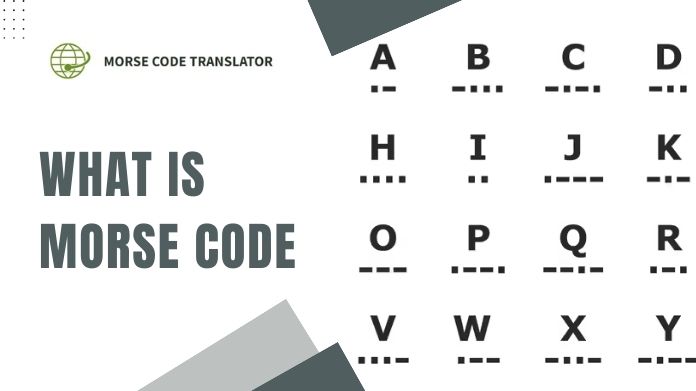Are you curious about what is Morse Code? Then read our guide and explore Morse Code.
Morse Code, a communication system developed in the 1830s, revolutionized long-distance communication when telegraphy and radio were at the forefront of technological advancement.
Named after its inventor, Samuel Morse, this ingenious method of encoding text into a series of dots and dashes is not just a relic of the past; it has a rich history and remains a fascinating aspect of communication technology.
In this Morse Code Translator article, we will examine the sources, principles, and practical aspects of the Morse Code.
What is Morse Code?

Morse Code, as we know it today, is a result of the collaborative work of Samuel Morse, an American inventor, and Alfred Vail, his assistant. The primary purpose of this system was to facilitate long-distance communication using telegraph wires.
Before the development of Morse Code, telegraphy relied on cumbersome and slow methods, making it challenging to transmit information efficiently. Morse Code revolutionized this process.
Samuel Morse is often credited with the telegraph’s creation, but he could only have achieved this with the accompanying Morse Code.
The code provided a systematic and efficient way to transmit messages over long distances using telegraph wires and radio waves.
The Basics of Morse Code
At its core, Morse Code consists of two fundamental elements: dots (.) and dashes (-). These elements are used to represent letters, numbers, and various symbols.
The duration of a dot is the basic unit of time in Morse Code, and the dash is typically three times the duration of a dot.
The space between the dots and dashes in a letter or symbol is equivalent to one dot’s duration, while the space between letters is typically three dots, and the space between words is seven dots.
Here is a reference for some commonly used Morse Code symbols:
A .- B -… C -.-. D -..
E . F ..-. G –. H ….
I .. J .— K -.- L .-..
M — N -. O — P .–.
Q –.- R .-. S … T –
U ..- V …- W .– X -..-
Y -.– Z –.. 0 —– 1 .—-
2 ..— 3 …– 4 ….- 5 …..
6 -…. 7 –… 8 —.. 9 —-.
Each letter and number is uniquely represented by a combination of dots and dashes, allowing messages to be transmitted with remarkable efficiency once the operator becomes proficient in interpreting and sharing Morse Code.
Practical Uses of Morse Code
While Morse Code was initially developed for telegraphy, it found applications in various fields.
Here are some notable practical uses of Morse Code:
1. Military and Aviation
Morse Code played a significant role in military and aviation communications. It was often used to send and receive distress signals, coordinates, and important messages, especially during war or emergencies.
2. Maritime Communication
Morse Code was the primary method of communication at sea for many years. It was used for ship-to-ship and ship-to-shore communication. Distress signals, such as SOS, were essential for maritime safety.
3. Amateur Radio
Amateur radio enthusiasts, or “ham” radio operators, still use Morse Code today. It’s considered a valuable skill in the amateur radio community, allowing for long-distance communication even when other forms of communication fail.
4. Space Exploration
Morse Code was employed in early space missions, including the Apollo program. Astronauts used it to communicate with mission control on Earth when radio signals were weak.
The Decline and Legacy of Morse Code
With the advent of more modern and efficient communication technologies, such as the telephone, internet, and digital messaging, Morse Code lost its practical significance in everyday communication.
In 1999, the International Telecommunication Union (ITU) officially removed the requirement for mariners to have the ability to communicate using Morse Code.
However, the Morse Code remains an enduring symbol of human ingenuity and an essential part of communication history.
It has recently enjoyed a revival in popularity among enthusiasts and hobbyists, preserving its legacy. Many people are fascinated by the unique and rhythmic nature of Morse Code, finding it an exciting and fun way to send messages.
Learning Morse Code
Learning Morse Code can be an intriguing and rewarding endeavour. Various resources are available online and in print to help beginners get started.
Apps, websites, and even physical Morse Code devices can assist in the learning process. It’s a skill that anyone with dedication and practice can pick up.
Conclusion
So, this is all about what is Morse Code. Morse Code represents a significant milestone in the history of communication technology. It transformed how information was transmitted over long distances and found applications in various fields.
While more modern methods have largely replaced it, it continues to captivate the imagination of those interested in its rich history and the unique way it encodes messages using dots and dashes.
Morse Code is a testament to human innovation and creativity, a timeless legacy reminding us of effective communication’s power.
